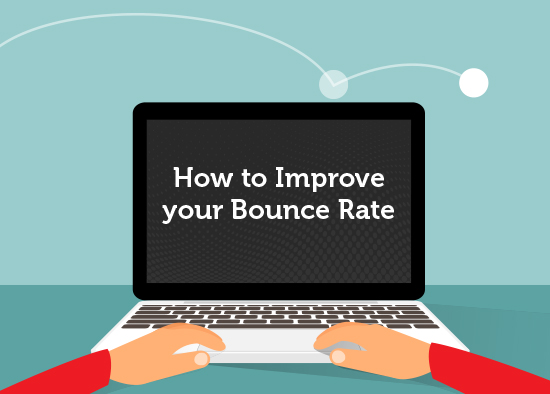The blog from Wisetiger.
Insight, ideas and informed comment. We've earned our stripes... www.wisetiger.co.ukRecent Posts
- Measuring bricks with bits: analytics for the real world
- Learning to love the robot: why you should automate your marketing
- The Essential EU GDPR Guide
- Mobile Killed the Television Star | Wisetiger
- Is Native Advertising a Good Thing? | Wisetiger
- 7 Web Design Trends for 2017 | Wisetiger
- Digital Marketing Trends for 2017
- Mobile is the best channel for targeting students
The blog from Wisetiger.
Insight, ideas and informed comment. We've earned our stripes... www.wisetiger.co.ukSearch stripey
Categories

How to improve your bounce rate and drive better engagement
What is bounce rate?
The bounce rate is the percentage of people who land on your website and immediately move away rather than continuing to interact with the content. This commonly occurs when a website visitor only views a single page and leaves or has a session timeout. This article is aimed at helping you understand the factors involved surrounding the metrics of the bounce rate and what can be done to monitor these attributes to improve engagement.
What is considered a high bounce rate?
There are always two sides to every story and the bounce rate on a website is no exception. Globally having a high bounce rate isn’t ideal but without diving deeper into the analytics, this overall view will not be an accurate way of analysing search quality or performance.
We feel globally the bounce rate of any website shouldn’t be higher than 50%. Anything above this percentage should be cause for concern especially in an eCommerce environment.
If your site is non-eCommerce there is a scenario where a high bounce could be considered a good thing. If your site is more information based and doesn’t necessarily have a conversion goal, then it could be a positive rather than negative. For example if the person has only visited that page and left but has been on the page for a long period of time, it shows they have read the content and could be a potential social engagement or return visitor. In light of that, if your page has a high bounce rate but a high average time on the page then it would be considered a positive action of the content.
It’s important to also keep in mind that a lower bounce rate doesn’t always equal better conversions. If you manage to lower the bounce rate on a page but fail to improve conversions it would then be vital to review if a technical issue is present, your calls to action are clearly visible or any other factors that may cause people not to engage with the website.
What factors contribute to the bounce rate?
A number of variables contribute to the bounce rate including usability problems, the design of the site, the relevance vs the entrance keywords and even the speed in which the page loads. With all these factors to be mindful of it’s important to isolate any obstacles that may affect your bounce rates and therefore conversion rates.
How do I grow engagement and improve the bounce rate?
Rather than viewing all your page bounce rates as a whole we recommend focusing on one individual section or even a single page. Remember to choose a page that has some actionable content such as a product page converting, email address use or form sign-ups. This way you can view if the bounce rate has an influence on the conversion rates during the test.
Once the page/section is chosen we recommend doing keyword research to see what people are searching for in relevance to the content. Taking that information you can then try testing changes to the content to see what happens to the bounce rate.
A great way to do this is using Google Experiments; as a free tool it’s easy to implement and loads the results in Google Analytics as well. This form of A/B split testing allows your existing page to stay the same as well as having an alternative version to have a percentage of visitors land on. For example the alternative page could have a slightly different design, newly applied keywords based on research, movement of content including calls to action and focusing on improving the page load speeds.
If you want to go a step further you can also go down a paid route sourcing Pay Per Click advertising to test keywords and landing pages. You could even use this facility to land people on any A/B split tested pages, this way you gain even better information when testing new keywords or search phrases.
- Focus on individual pages/sections rather than the global bounce rate
- Use Google Adwords to test important keywords and land people on pages to see how they interact with your content
- Try A/B split testing to rearrange your page structure and visual appeal to find out what is most engaging for the visitor
- Review usability by analysing the visitor’s behavior
- Use the average time on page to filter out the worst bounce rates. For example the lower the average time on a page is vs a high bounce rate
For more information about bounce rates and driving successful engagement on your website talk to Wisetiger on 01252 731330 or email seo@wisetiger.co.uk.
Tom Hood
©2005-2014 Wisetiger









Start the conversation